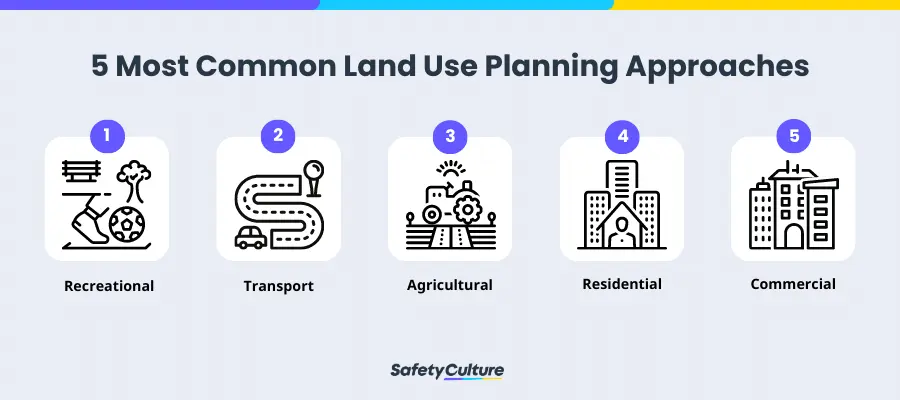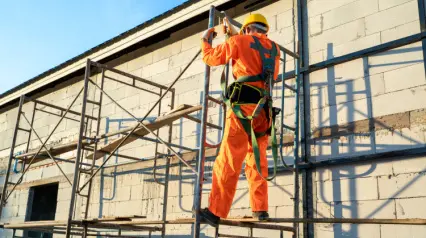What is Land Use Planning?
Land use planning is integral to building and managing cities and towns. It involves looking at how land should be used, ranging from green space to residential areas and industrial sites. It’s also the basis of zoning laws and restricts particular land use. Careful planning also helps reduce our environmental footprint by ensuring that resources are managed responsibly. As a result, it helps preserve the environment, conserve resources, promote social gatherings, enhance communities, and support transportation, industry, and economic activity.
Why is Land Use Planning Important?
By following a thorough land use planning process, communities can craft sustainable and purposeful visions that will meet the needs of current and future generations. Here are some reasons why this kind of planning is so crucial:
- Reduces pollution
- Provides cleaner air and water
- Ensures flood prevention
- Maintains and promotes safe routes for transportation
- Reduces noise and light pollution
- Promotes an ecologically-balanced environment
- Protects endangered species
- Reduces disaster risk
- Minimizes hazards and protects public health
- Maintains and improves the fiscal health of the community
- Preserves open space
- Manages growth
What Does A Land Planner Do?
Before you invest in a property and develop it, consulting with an experienced land-use planning firm is highly recommended. The process can begin even before purchasing the property so that zoning regulations, soil conditions, and structural elements meet your requirements before purchase. Their assessments will guarantee that all components required for successful development are present and ready for action.
Moreover, a land planner can collaborate with local governments to construct comprehensive community development plans that incorporate city parks, open spaces, urban centers, and social areas for everyone in the neighborhood, as well as walking and cycling paths. A land-use planner has what it takes to design and deliver an idea for an entire town or just one housing project.
Land planners’ role is to advise people and organizations on how to use a property for residential or commercial purposes. Moreover, they need to conduct feasibility studies and impact analyses while considering transportation logistics that may arise.
What Are The Most Common Land Use Planning Types?
Urban cities and other communities face a variety of land use planning approaches. Yet, five primary types stand out:

Land Use Planning Types
Recreational
Recreational land offers a variety of exciting activities, including horseback riding centers, parks, open spaces, golf courses, sporting fields, and courts for games like baseball and basketball. Kids can enjoy playgrounds with slides and fishing ponds or dip in nearby swimming pools.
Transport
This category of land encompasses interstates and highways, bus stops, trains, light rails, airports—essentially any terrain necessary to aid in transportation. Municipal centers for public transit, like bus stations and subway systems, also fall under this classification. Increasing mobility requires zoning guidelines for transportation-related areas.
Agricultural
Agricultural land is suitable for various agricultural activities, such as growing and harvesting crops, constructing farm buildings, raising livestock in fields, or any other farming activity. Depending on the local regulations, there might be limits to how many animals can be raised and what type they must be.
Additionally, restrictions could also apply to the kinds of crops grown or pest control techniques used. Furthermore, it’s important to remember that most rural zones contain water rights and various related constraints.
Residential
Residential zoning dictates the type and density of properties allowable in an area, fluctuating from low-density single-family residences to high-density multifamily complexes. A distinct classification exists for mixed developments with a blend of residential dwellings, business facilities, and recreational areas.
Commercial
Commercial zoning is a designation that permits businesses to set up offices, warehouses, restaurants, and other commercial operations. Different commercial activities are subdivided into sub-designations by special ordinances to maintain order. This ensures that certain activities can only occur within their designated zones.
Other zoning categories and land-use planning parameters involve industrial, tourism, and public amenities such as firehouses, police stations, and hospitals. Swift access to emergency services is a necessary component of local land-use planning.
Create Your Own Land Use Planning Checklist
Eliminate manual tasks and streamline your operations.
Get started for FREEWhat Factors Influence Land Use Planning?
The number of factors that may impact land use planning can be overwhelming. Among the most common ones are:
- Climate change
- Recovery
- Economy
- Housing
- Food
- Environment
- Energy
- Social equity
- Health
- Livability
- Transportation
When crafting community plans, land-use planning companies must consider the present and plan for what lies ahead.
- Changing demographics
- Lifestyles
- Potential perils (e.g., hurricanes, earthquakes, floods, etc.)
- Technological advancements and transportation types
- Improvements and advancements in housing
- Energy conservation
- Innovations in green technology
Raw Land Development Process
Economic Feasibility
Before embarking on a raw land investing journey, it is essential that you first establish its financial viability. Before starting any real estate investment, it’s necessary to determine your potential ROI (Return On Investment) to minimize the market’s unpredictability and determine whether there will be adequate profit after deductions.
Acquisition
With a grasp of the likely costs—including what you should receive in return—you can now set an offer price. Getting contractors to tender actual bids is essential at this stage, as it will give expenditure estimates and suggest a maximum offer cost. Investors can make more informed investment decisions with this information.
Zoning
The type of property you want to construct and zoning codes heavily influence your plans for its presentation to buyers. These regulations will decide whether building a single-family or multifamily residence, condominium complex, or commercial is permissible on the lot in question. You must understand these laws before starting any development process.
Financing
When considering a real estate investment, the use of the property will often determine what financing is obtained. The loan-to-cost ratio (LTC) should be one of your biggest concerns; this is how much money lenders are willing to offer for the project, which generally depends on its construction and intended usage. Most banks provide 80 to 85 percent of overall costs, though owner-occupied homes can get more favorable bank rates.
Construction
Generally, real estate investors will engage in horizontal property development—like road grading, curbs, and utility installation—followed by building from the ground up. Additionally, they must consider construction financing for their projects. Typically, contractors are paid per task or project phase, and lenders reserve around 10percent until the entire venture is finished.
Marketing
After completing the land development process, marketing is the last step. Herein lies the importance of comprehensive research into your target neighborhood and potential buyers’ market prices and rental demands. As an investor, creating a compelling strategy to attract purchasers to your property is essential. It could include enlisting a realtor’s help and advertising through online listings, newspapers, or social media.
How To Make A Land Development Plan
To craft a broad land development strategy, seek the help of an accomplished land-use planning organization. A reputable plan should include:
- Site constraints or opportunities (e.g., access to utilities, easements, zoning, encroachments, etc.)
- Environmental, hazardous, archaeological, wetlands, water rights, threatened or endangered species, or other government-related concerns
- Plans for potential delays or cost increases in the project’s financing
- Marketability of the project
- Impact studies (traffic, stormwater run-off, water, etc.)
- Community master plans
- A flowchart of the timeframe for reviewing and obtaining permits
- A breakdown of each element’s cost
- Site plan
- Sequence of construction
- Plan for logistics management
FAQs About Land Use Planning
Numerous land use problems exist, including:
- Soil degradation
- Deforestation
- Water pollution
- Habitat loss
- Indiscriminate development
- Overpopulation
Poor land management can also lead to urban sprawl and a decrease in agricultural productivity.
Residential land is generally known as the most commonly used land use. This type of property consists of homes, be it single-family residences, manufactured (mobile) homes, or apartments. As its name suggests, residential land is where people construct and inhabit these dwellings.
Land use management is an efficient system that guarantees the right development projects are executed in the most suitable areas at precise times. It includes legal mandates and regulatory guidelines which ensure land developments follow suitably sustainable patterns.
Numerous issues arise in rural areas due to land use, such as clashes between farmers and livestock keepers. Furthermore, rapid urban growth leads to land disputes with surrounding farmlands. Additionally, there is a conflict between customary and approved land rights which adds more complexity to the situation.




